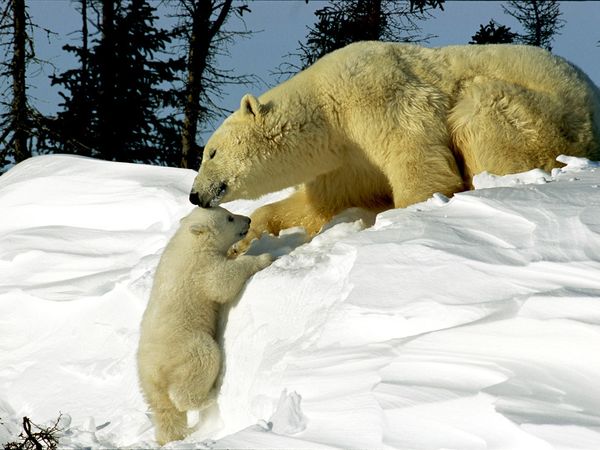When Times Get Tough,
the Tough Get Vicious:
Polar Bear Infanticide
Marisol Lauffer, Aashis Thapa, Gustavo Lopez
Biology 342 Fall 2012
Ontogeny
How does it develop?
Ontogeny of the infanticide behavior in Polar bears refers to the development of this behavior over the lifetime of Polar bears.
Infanticide in Polar bears can be brought about by environmental pressures, like scarcity of food and sexual selection. Infanticide is demonstrated only by adult male Polar bears, which indicates that the behavior can be elicited by environmental cues and pressures. Polar bear cubs are quite helpless when they are born and are nursed by the mother for about two and a half years. This is the time when they are vulnerable to infanticide. The female of the species takes care of the young cubs and the females, at times fighting off aggresive males. After the cubs are past the age of around two and a half years, however, the mother will chase away the cubs or abandons them, leaving them to live as free roaming adults.

Figure 1. A cub with its mother.
Scarcity of food sources seems to be one of the most important stimuli for infanticide. In the Beaufort Sea, in the Arctic region, nutritional stresses caused by longer ice-free seasons have led to cannibalistic incidents (Amstrup et al. 2006). Around Svalbard at Hopen island, the population Polar bear population is close to carrying capacity, and the reduction of the spatial segregation of age and sex classes, due to the shrinking habitats also is in affect. Without a mother to care for them, and the aformentioned environmental conditions, the now, adult males develop the infanticide behavior, especially around Svalbard at Hopen island (Derocher, A.E., & Wiig, O. 1999)..
Younger males are less likely to be involved in infanticide than adult males, as they are cared for and nurtured, and, interestingly, adult males do not kill their own cubs. The adult males are also more likely to kill a cub of another female so that the female can be more receptive, reproductively, to increase their own lifetime reproductive fitness, which will be revisited later, but also has to do with sexual maturity during the male Polar bear's development.